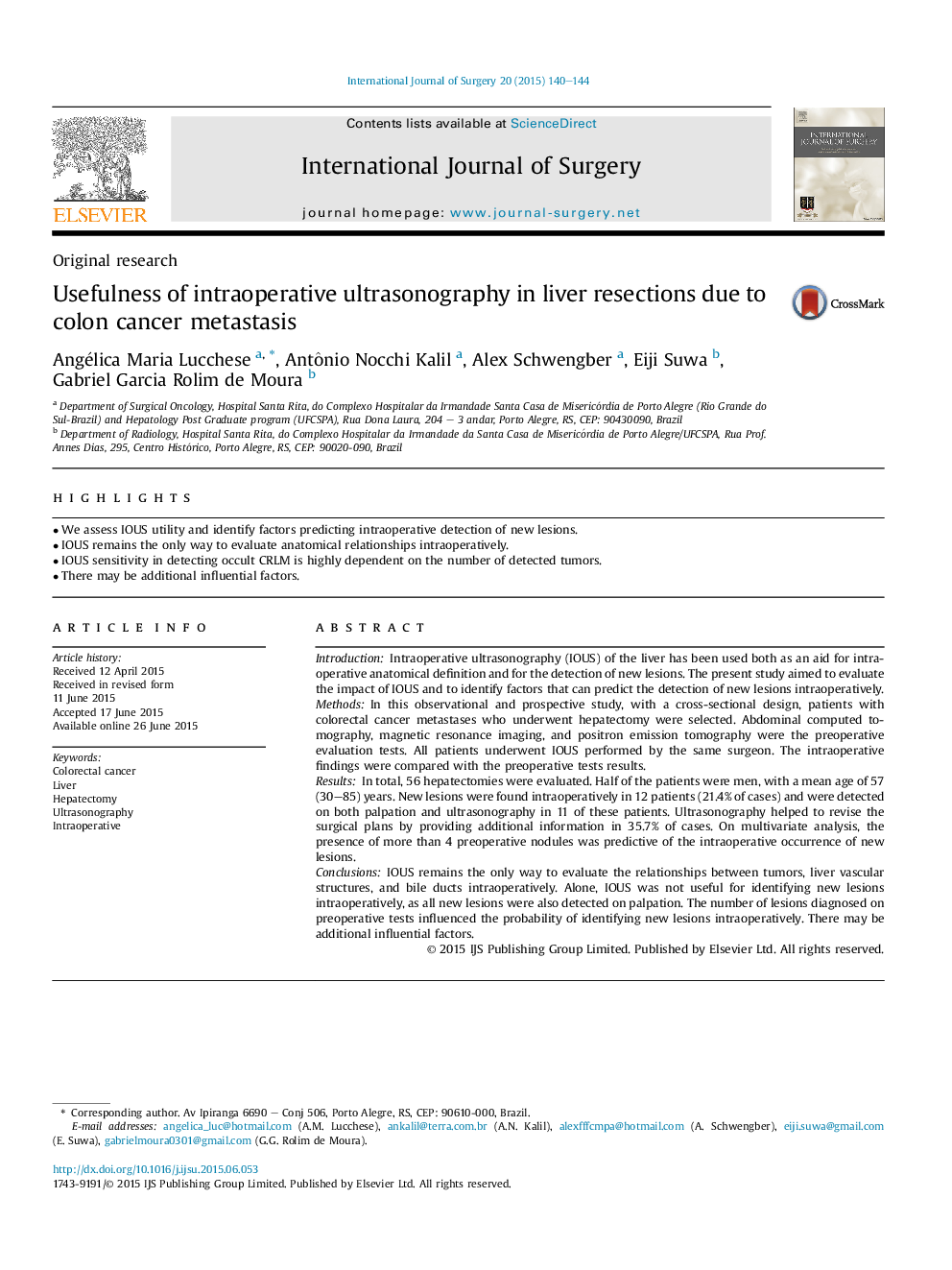| Article ID | Journal | Published Year | Pages | File Type |
|---|---|---|---|---|
| 6251331 | International Journal of Surgery | 2015 | 5 Pages |
â¢We assess IOUS utility and identify factors predicting intraoperative detection of new lesions.â¢IOUS remains the only way to evaluate anatomical relationships intraoperatively.â¢IOUS sensitivity in detecting occult CRLM is highly dependent on the number of detected tumors.â¢There may be additional influential factors.
IntroductionIntraoperative ultrasonography (IOUS) of the liver has been used both as an aid for intraoperative anatomical definition and for the detection of new lesions. The present study aimed to evaluate the impact of IOUS and to identify factors that can predict the detection of new lesions intraoperatively.MethodsIn this observational and prospective study, with a cross-sectional design, patients with colorectal cancer metastases who underwent hepatectomy were selected. Abdominal computed tomography, magnetic resonance imaging, and positron emission tomography were the preoperative evaluation tests. All patients underwent IOUS performed by the same surgeon. The intraoperative findings were compared with the preoperative tests results.ResultsIn total, 56 hepatectomies were evaluated. Half of the patients were men, with a mean age of 57 (30-85) years. New lesions were found intraoperatively in 12 patients (21.4% of cases) and were detected on both palpation and ultrasonography in 11 of these patients. Ultrasonography helped to revise the surgical plans by providing additional information in 35.7% of cases. On multivariate analysis, the presence of more than 4 preoperative nodules was predictive of the intraoperative occurrence of new lesions.ConclusionsIOUS remains the only way to evaluate the relationships between tumors, liver vascular structures, and bile ducts intraoperatively. Alone, IOUS was not useful for identifying new lesions intraoperatively, as all new lesions were also detected on palpation. The number of lesions diagnosed on preoperative tests influenced the probability of identifying new lesions intraoperatively. There may be additional influential factors.
